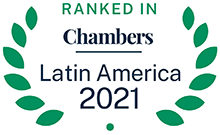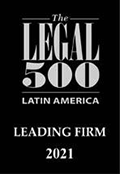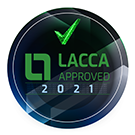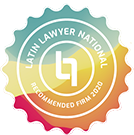-
About the firm
- The Firm
-
Members
- Our Members
Attorneys
- Henry Lang
- Juan Carlos Cersosimo
- Roberto Araya
- Mónica Romero
- Milena Jaikel
Support Personnel
- Edelweiss Schumacher
- Alejandro Marín
- Hermelinda Colville
-
How to...
- Latest News
- Contact Us
- Español
- Français
-
Expertise areas
-
Real Estate
-
Incorporation
-
Immigration
-
Litigation
-
Labor Law
-
Free Trade Zones
-
Trademarks
-

Buying Property in Costa Rica

In Costa Rica, most land is titled, and titles are registered and centralized at the offices of the Public Register in San José.
Most titles are currently organized by the means of a computer system called “Folio Real”, although some of them, especially the ones for properties that have had no transfers or other transactions affecting them for a long time, are not organized in the computer system and are still registered in an older fashion, which refers to specific books, pages and entries of hard records at the Register.
Property transfer require for buyer and seller to sign a deed before a Costa Rican Notary Public (whose concept is different than the one in many other countries such as the United States, Canada or the United Kingdom and is required to formalize all transactions dealing with real estate) and for such deed to be recorded at the Public Register.
A. “FOLIO REAL” AND “BOOK/PAGE/ENTRY” SYSTEMS – TITLE SEARCHES
All titled land in the country, notwithstanding of it being registered following the newer “Folio Real” system or the older book/page/entry system can be accurately and safely title-searched in order to determine all relevant aspects on the specific property, such as ownership, liens, encumbrances, annotations or other issues that may affect ownership rights or the possibility of transferring the land to a third party.
Title searches on “Folio Real” properties may be initiated in the computer system, which is accessible on-line, but will then probably require to be continued in the book/page/entry system, especially when the computer search shows liens, encumbrances or other property characteristics that were “inherited” from older transactions on such land before it was transferred to the “Folio Real” system. Additionally, although the computer system will indicate a list of liens and encumbrances, in most cases a thorough and complete title search will require the review of microfilmed or scanned documents indicating the details of such finds, which are not accessible on-line and can only be obtained at the offices of the Public Register.
Although, as indicated, the “Folio Real” system is accessible on-line, in general terms private parties lack the legal training to be able to accurately, safely and thoroughly interpret the information, as well as follow-up any required further steps, reason for which we strongly recommend for a knowledgeable professional to be used for performing and reporting the title search.
In addition to the performance of a title search, when the property is owned by a corporate entity, it is essential to perform a corporate search at the Commercial Section of the Public Register, since only this step will allow to verify that the entity transferring the property is in good standing and that the proposed signatory of the transfer deed has sufficient capacities to do so.
B. “FOLIO REAL” SEARCH REPORTS
When reviewing a “Folio Real” title search report, the main elements that will appear and need to be understood are the following:
1. “Folio Real” number:
This number is traditionally reported as composed of:
(i) A single number from one to seven, indicating the Province where the property is located, namely 1 for San José, 2 for Alajuela, 3 for Cartago, 4 for Heredia, 5 for Guanacaste, 6 for Puntarenas and 7 for Limón.
(ii) Then followed by a sequence of five or six numbers.
(iii) Finally with a sequence of three more numbers, which are generally three zeroes (indicating that the property is fully owned by one person or corporation) or two zeroes followed by another number (indicating partial ownership by different parties).
2. Location information:
The report will show the name and number for the Province, County and District where the property is located.
3. Measure:
An indication of the size of the property, in square meters will be made.
4. Boundaries:
There will be four boundaries indicated, normally North, South, East and West; although it is also possible to find them as Northwest, Northeast, Southwest and Southeast. Boundaries can consist, mainly, of names of the owners of the neighboring properties, natural landmarks such as rivers or lakes, or man made landmarks such as public roads.
5. Owner information:
For corporations, it will indicate the company’s name and its corporate identification number. In the case of individuals, the Register will show full name, identification number and marital status. In the case of marital status, it is crucial to verify that it has not changed from the one shown at the Register (i.e. married once to divorced once; married once to widowed once) since in many cases the transfer or other transaction will not be authorized without a Court’s resolution resolving the division of assets.
6. Map number:
In most cases, the “Folio Real” will show an existing registered map for the property (in Spanish, “Plano Catastrado”), although there are still properties in which such map number is not quoted or simply does not exist.
Within the Public Register, the department that registers and keeps record of these maps (namely, the Department of “Catastro”) is different and separate from the Property Register, where “Folio Real” is. This means that one may encounter a registered map which is not quoted at the Property Register and that even shows data such as measure or boundaries which does not coincide with the computer search. If that is the case, there must be a determination of the consequences of these differences and if they are not obstacles for the transaction, a rectification of the record must be made at the moment of the transfer.
By law, no property transfers can be currently made if the land does not have a registered map, and such map must be quoted in the transfer deed. If such map does not exist, it must be made by a specialized registered surveyor, then recorded before the transaction can be effectively achieved and a delay of several weeks should be expected while this process takes place.
7. Encumbrances:
This item is referred to in Spanish as “Gravámenes” and it includes many items that under other countries’ legal terminology may be considered not only as encumbrances but also as liens.
If the title indicates the existence of “Gravámenes”, the most common elements that can be found are:
(i) Mortgages, which will show their term, amount, creditor and debtor. Further information and mortgage terms would need to be consulted in microfilmed or scanned documents at the Register.
(ii) Easements, which might be in favor or against the property and could consist on road rights, rights for the passage of water, transiting rights, etc.
(iii) Conditions and limitations, which normally originate when the property was originally titled and generally concern public roads, bodies of water, limitations on sale or use, etc. and expire after a certain term.
Encumbrances will show a reference number that allows its follow-up with microfilmed or scanned documents, in many cases directly related to the filing data of the document that originated them.
8. Annotations:
All filed documents pending registration for transactions on the property as well as some court procedures concerning the title-searched property will also be shown.
Pending registration may be due to filing of incomplete or erroneous documents, lack of payment of taxes, etc. A document filed on a property while an annotation appears will not be registered until the annotated document or documents are either registered or removed from the queue following a special procedure.
C. ADDITIONAL ELEMENTS
1. Form of ownership:
Although titled land can be purchased in Costa Rica in the name of an individual as well as in the name of a company, and foreign ownership is fully permitted, it is advisable to purchase property through a corporation. This structure allows to have flexibility and more predictability on areas ranging from estate planning (if share ownership is properly structured the investor can avoid his heirs a painful and lengthy long-distance probate procedure), tax management (as an example, rules on corporate expenses are more flexible than the ones on personal ones), and representation (shareholders meetings can facilitate granting special powers of attorney or other types of authorizations for many actions thus not requiring physical presence in the country).
2. Buying the shares of the company that owns the property instead of transferring it through the Register:
A somehow common practice has been to transfer the shares of an existing company that owns the land to be purchased, instead of transferring it through the Public Register to a third party.
Although the share transfer system may sound appealing at first sight, since it allows to save money in notary fees and transfer taxes and may seem like a faster way to achieve the goal of transferring control of the property to the buyer, we do not recommend to take this path and strongly advise to transfer property through the Register under the standard procedure of a notarized deed.
When you acquire the shares of a corporation in Costa Rica, as in most other countries, you do not only get the company’s assets (in this case, mainly, the land) but also its liabilities, and there is no mechanism to satisfactorily list them or rule out their existence. Such liabilities, if existent, would directly affect the land being acquired.
Under such terms, it is highly recommended that the extra cost is taken and that a normal transfer through the Public Register is made. Many people will consider such extra cost as a type of insurance of the property which will shield them against possible future claims from the seller’s creditors.
3. Buying only a piece of a registered property:
Purchases of portions of a titled property are also possible in Costa Rica, this is called “segregación”. For such purposes, a registered map for the land to be purchased is required, as well as an authorization for the local government (“Municipalidad”) where it is located. Such authorization must appear in the registered map in the form of a stamp, which is referred to as “visado municipal”.
4. Concession land:
Several areas of the country, mainly the ones affected by the Maritime Zone Law and located adjacent to the ocean, are not subject to private ownership and their possession is granted as a concession which could simplistically be compared to a lease made from the government for a specific period of time.
Concessions are difficult to examine and in many cases the prospective buyer will not be able to get a good level of certainty on what is being acquired. This type of transaction should be avoided if pieces of land with similar conditions and titled can be found; otherwise, additional caution must be exerted.
© All rights reserved







